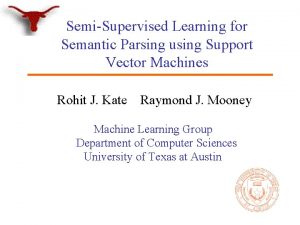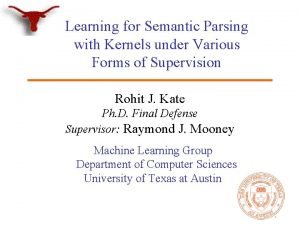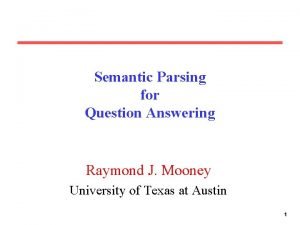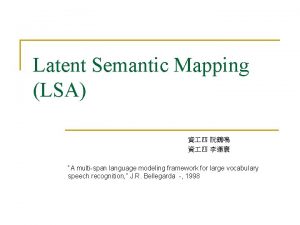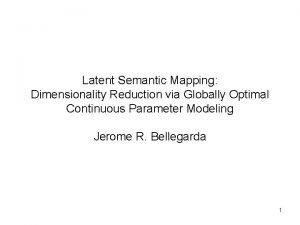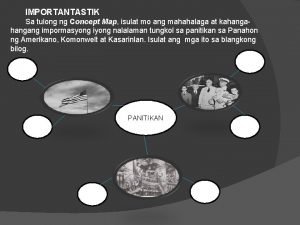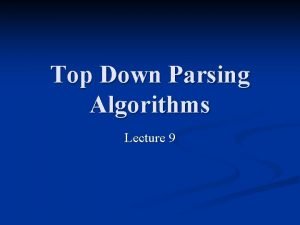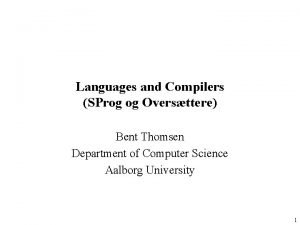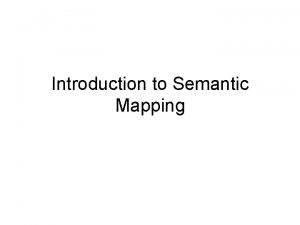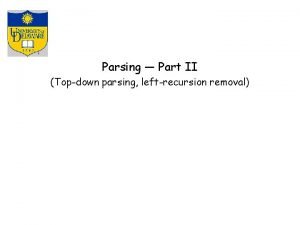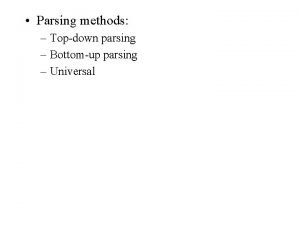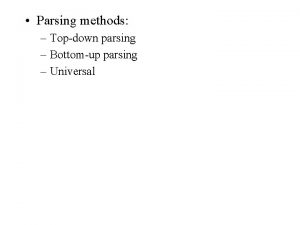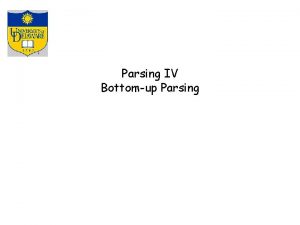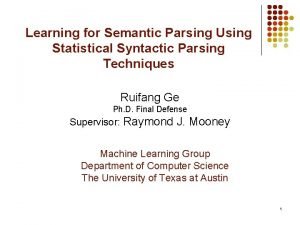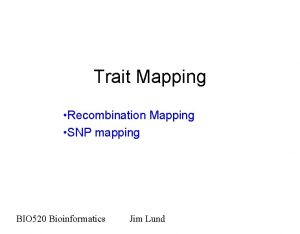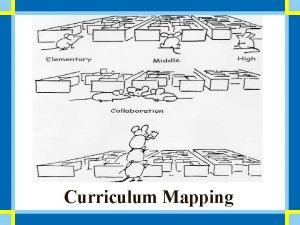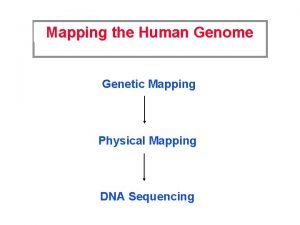Semantic Parsing What is Semantic Parsing Mapping a


![ATIS: Air Travel Information Service Interface to an air travel database [Price, 1990] Widely-used ATIS: Air Travel Information Service Interface to an air travel database [Price, 1990] Widely-used](https://slidetodoc.com/presentation_image_h/fee915a638a3ef6fedbb381cb764ab05/image-3.jpg)








- Slides: 11

Semantic Parsing

What is Semantic Parsing? • Mapping a natural-language sentence to a detailed representation of its complete meaning in a fully formal language that: – Has a rich ontology of types, properties, and relations. – Supports automated reasoning or execution. • Example application domains – ATIS: Air Travel Information Service – CLang: Robocup Coach Language – Geoquery: A Database Query Application
![ATIS Air Travel Information Service Interface to an air travel database Price 1990 Widelyused ATIS: Air Travel Information Service Interface to an air travel database [Price, 1990] Widely-used](https://slidetodoc.com/presentation_image_h/fee915a638a3ef6fedbb381cb764ab05/image-3.jpg)
ATIS: Air Travel Information Service Interface to an air travel database [Price, 1990] Widely-used benchmark for spoken language understanding May I see all the flights from Cleveland to Dallas? Semantic Parsing Air-Transportation Show: (Flight-Number) Origin: (City "Cleveland") Destination: (City "Dallas") NA 1439, TQ 23, … Query

Present Foci of Semantic Parsing • Reducing supervision from full MR’s to query-answer pairs, other types of weak supervision, or unsupervised learning. • Scaling up to broader-coverage domains, such as querying Freebase. • Grounded learning that connects language to perception and action. • Integrating Logical and Distributional Semantics

Learning from Queries and Answers • Instead of training on gold-standard MRs, just train on gold-standard answers: – “What is the state with the smallest area? ” “Rhode Island” • Using learning methods for structured output (Clarke et al. , 2010). • Using “dependency based” latent logical forms (Liang et al. , 2011).

Scaling Up • Several recent projects have focused on scaling up to databases with large ontologies/schemas like Freebase. – Use standard schema-matching techniques to extend the lexicon (Cai & Yates, 2013). – Augment a CCG parser with on-the-fly ontology matching (Kwiatkowski et al. , 2013). – Learn to automatically add “bridging” predicates to the query (Berant at al. , 2013, 2014).

Grounded Semantic Parsing • Produce meaning representations that can be automatically executed in the world (real or simulated) to accomplish specific goals. • Learn to interpret navigation instructions in a virtual environment by simply observing humans giving and following such directions (Chen & Mooney, AAAI-11). • A Voice-Commandable Autonomous Forklift for Warehouse Operations in Semi-Structured Environments(Teller & Walter, ICRA-10)

Sample Navigation Instructions • Take your first left. Go all the way down until you hit a dead end. • Go towards the coat hanger and turn left at it. Go straight down the hallway and the dead end is position 4. Start 3 End H 4 Observed primi 1 ve ac 1 ons: Forward, Le 9 , Forward • Walk to the hat rack. Turn left. The carpet should have green octagons. Go to the end of this alley. This is p-4. • Walk forward once. Turn left. Walk forward twice.

Integrating Logical and Distributional Semantics (Garrette et al. 2011, 2012; Beltagy et al. , 2013, 2014) Sent 1 Sent 2 BOXER LF 1 LF 2 Dist. Rule Constructor Rule Base Vector Space MLN/PSL Inference • BOXER [Bos, et al. 2004]: maps sentences to logical form • Distributional Rule constructor: generates relevant soft inference rules based on distributional similarity • MLN/PSL: probabilistic inference • Result: degree of entailment or semantic similarity score (depending on the task) result

My Work in the Past Year • Some Programming work for SView System – http: //ws. nju. edu. cn/sview • Property consolidation for entity browsing – attributional similarity: the degree to which two words are synonymous(has Author; written By) – Combine different semantic distance computation methods: ESA(Gabrilovich and Markovitch, 2007), Resnik (Resnik, 1995), Word 2 vec (Mikolov et al, 2013) – Using similarity of neighbor words. – Results on the OAEI Conference track: F-measure 0. 61

Future word • Semantic Parsing for Question Answering over linked Data – Open domain – No constrains on the vocabulary – No constrains on grammars • Try to find out what resources are useful to scale semantic parsing to open domain without golden standard meaning representations or questionanswer pairs – Facts in freebase have their natural language expressions
